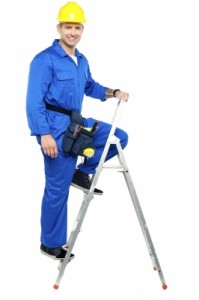When we talk about “workwear” we’re not talking about what you wear to the office on “casual Fridays” … we’re not even talking about what to wear on the other four days either.
 By definition, “workwear” is different from regular clothing because it must be designed in order to withstand a much higher intensity of use. Depending on the type of work involved, various types of specialty clothing might be essential. In other cases, it can simply mean being able to get the job done without causing your day-to-day clothes any damage.
By definition, “workwear” is different from regular clothing because it must be designed in order to withstand a much higher intensity of use. Depending on the type of work involved, various types of specialty clothing might be essential. In other cases, it can simply mean being able to get the job done without causing your day-to-day clothes any damage.
Uses
If your job involves dealing with hazardous substances or naked flames you will usually be required to wear protective clothing as set out by various health and safety regulations. These must be made from materials resistant to the substances in use and offer a comfortable yet secure fit that reduces the risk of injury or harm.
Types
Everything from gloves, boots and full-body coverings can be made in fabrics and materials that are specifically created to deal with a wide range of potential problems and therefore there are many types of workwear.
Coveralls are one of the most commonly used items of workwear and essentially are a one-piece garment that covers the torso, arms and legs. They come in a wide variety of styles and materials and may also be advertised as boiler suits or all-in-ones. A similar item is known as overalls, which generally cover the legs and torso but not the arms.
From lightweight versions that are perfect for painting and decorating, through to more specialized items such as flame retardant boiler suits, the basic design means that everyone from a fighter pilot to a self employer handyman can find a set of overalls perfect for their job.
Design
Although the basic design remains unchanged across the different varieties, specialist versions may have different selections of pockets, be made from
various materials and come in a range of weights and flexibility options.
Today, some coveralls are even being designed with personal computing devices in mind so that wired connections are kept safe and out of sight with special
pockets or enclosures provided to give easy access.
Cost
The cost of a pair of coveralls varies widely and is totally dependent on the type of use that you need them for. The simplest and cheapest are based on heavyweight paper material and are meant for a once-only use and are fully disposable.
At the other end of the spectrum are specialist garments made from expensive flame retardant materials or others with chemical protection capabilities. These
are obviously intended for a long life span so the outlay involved in purchasing will reflect this.
Branding
Custom made workwear of all kinds can be color coded or fully branded to fit in with the commercial image of a company or even simply to delineate different types of work within the same group of employees.
Who Pays?
Depending on the job and the employer, you may be required to supply your own specialty clothing or it may be supplied by your employer. If you have to pay for it yourself, you may be eligible for a tax deduction.
See Also:
- Teaching Teens The Importance Of Workplace Safety
- Dressing for Success at Job Interviews for Men
- What Skills are Needed to Become a Plumber?
- The Path to Success: From Intern to Employee
Image courtesy of Stock Images / FreeDigitalPhotos.net.




